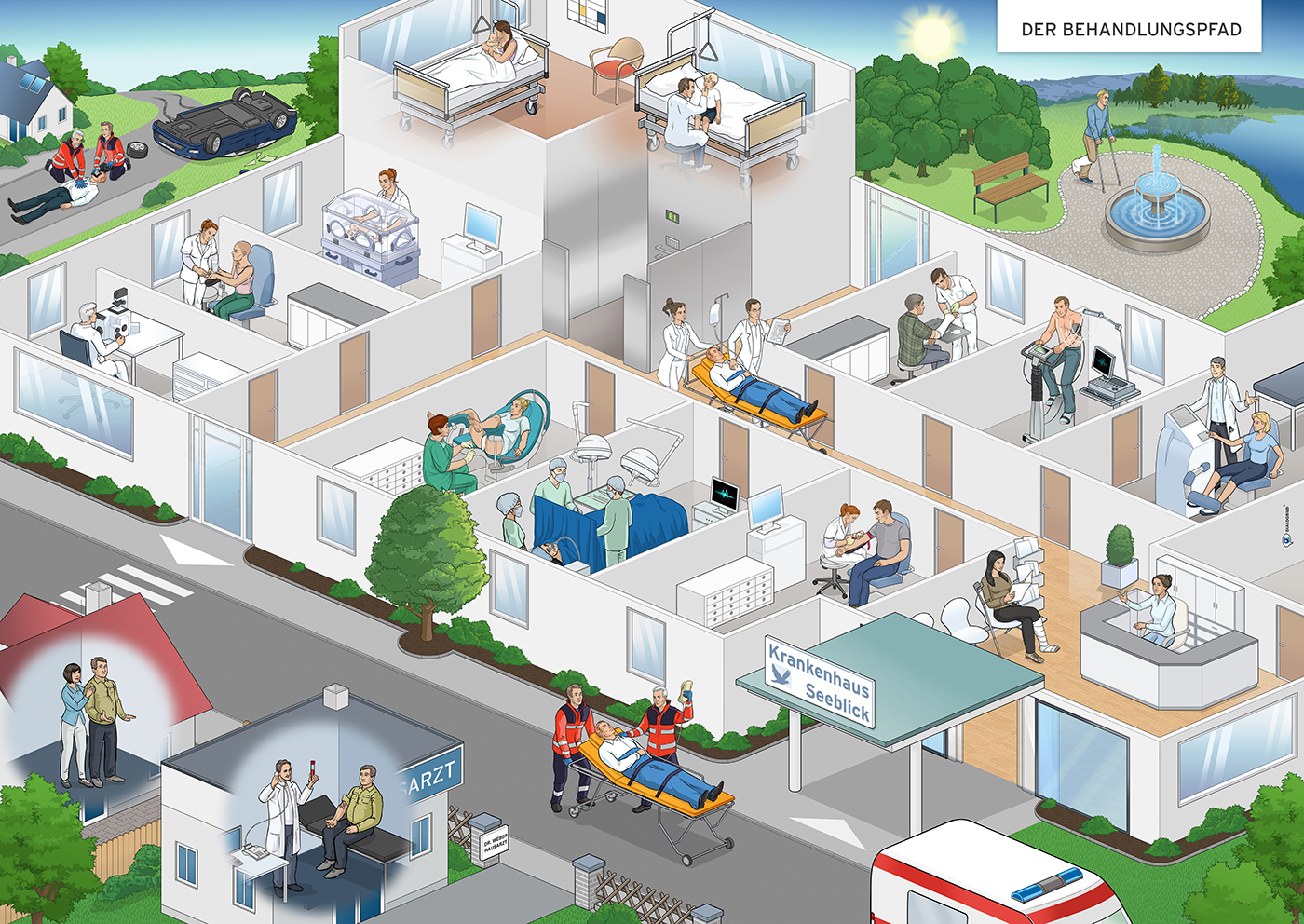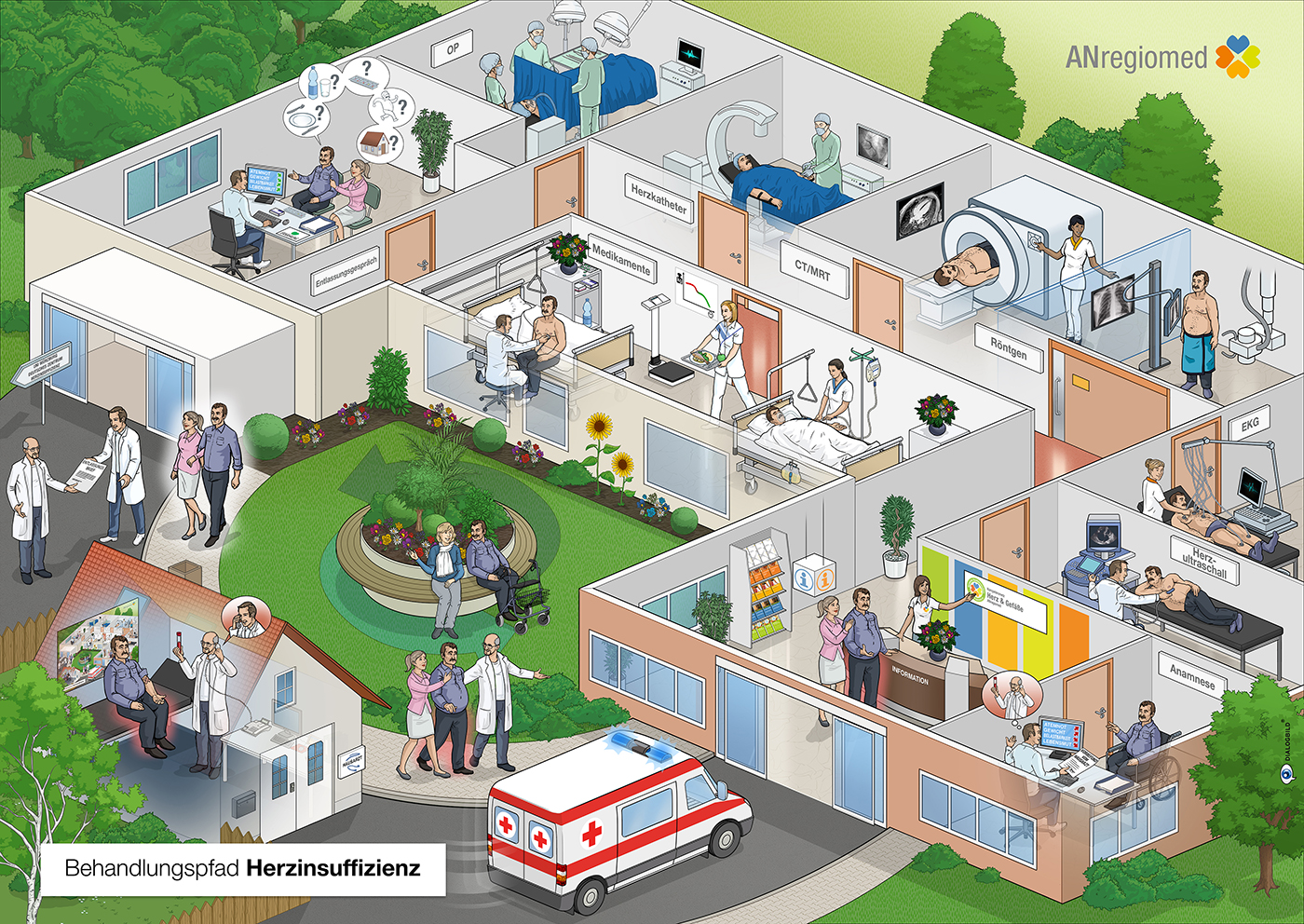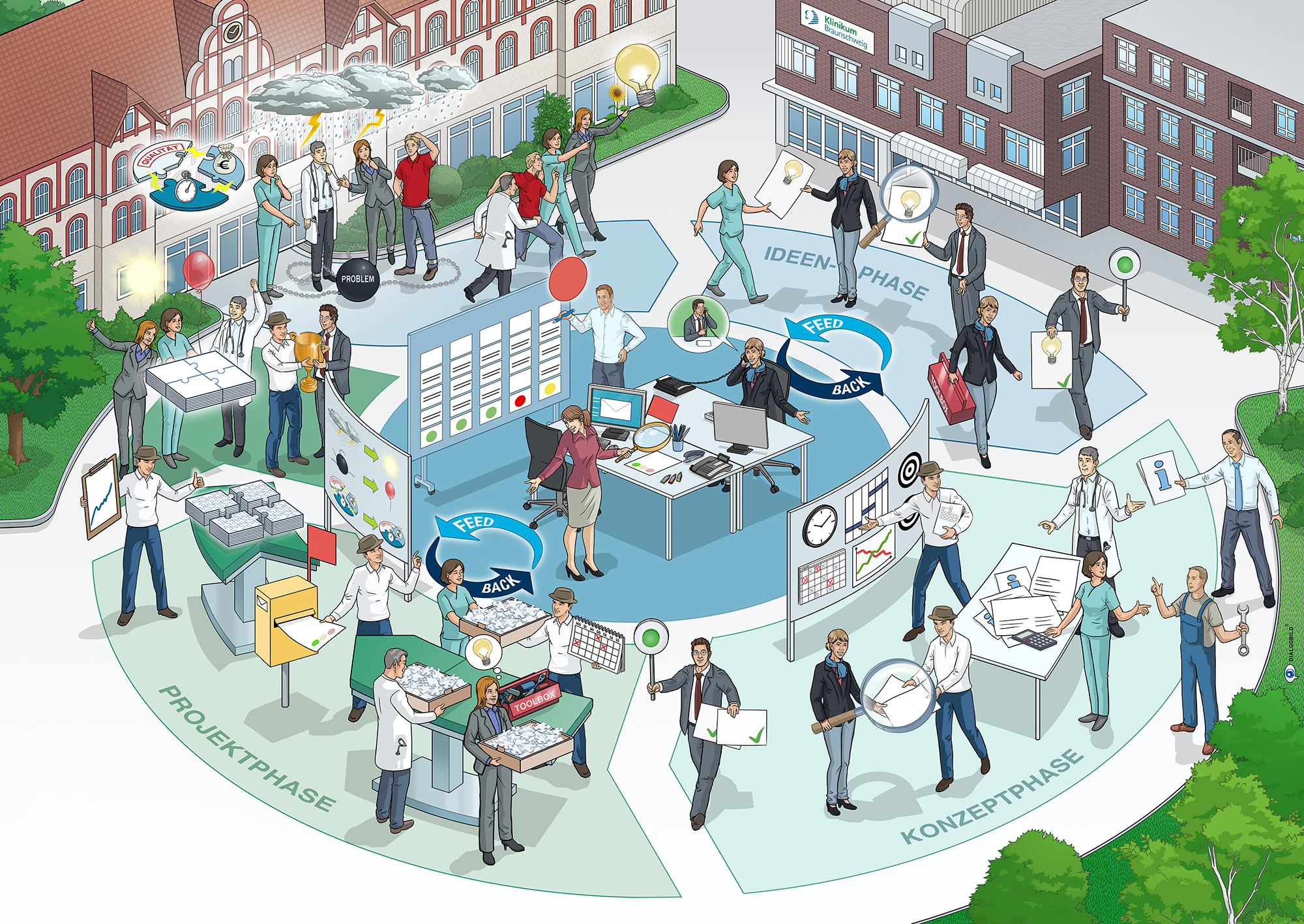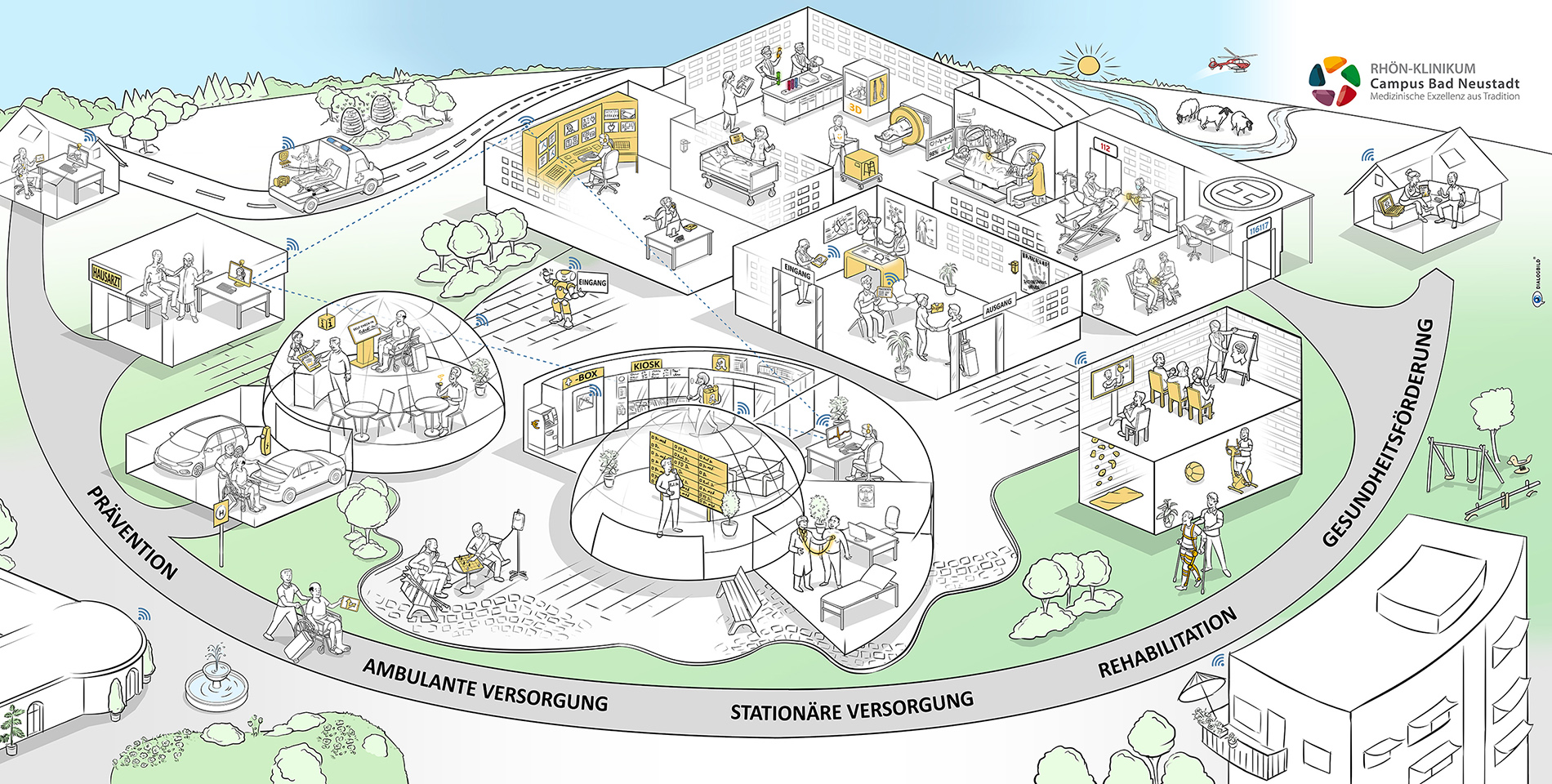

Care pathway: The key to efficient and high-quality patient care
Structured and transparent patient care is playing an increasingly important role in modern medicine. A key tool for this is the care pathway, also known as the clinical care pathway. This article explains what care pathways are, how they work, and what benefits they offer for patients, medical staff, and healthcare facilities.
What is a care pathway?
A care pathway, also known as a clinical pathway, is a detailed plan that maps the entire treatment process for a patient with a specific disease or symptom. It serves as a documentation and management tool and can be developed and implemented for each individual case, specific to the disease.
Structure of a Treatment Pathway
A typical treatment pathway contains the following elements:
- Sequence of treatment steps
- Scheduling
- Content of the individual measures
- Responsibilities of the people involved
In addition, the course of treatment is visualized on a timeline to ensure a clear overview.
The Importance of the Clinical Treatment Phase
The clinical treatment phase is an integral part of the care pathway. It encompasses all medical and nursing interventions performed during a patient's hospital stay. A well-structured care pathway considers:
- Diagnostic procedures
- Therapeutic interventions
- Nursing measures
- Medication
- Monitoring and documentation
Clearly defining these aspects in the clinical treatment phase ensures consistent, high-quality care.
Advantages of Visual Treatment Pathways
Visualizing treatment pathways offers numerous advantages for everyone involved in healthcare:
1.) Faster onboarding of new employees: Visual treatment pathways allow new employees to quickly gain an overview of procedures and processes.
2.) More efficient consultations: Doctors and nurses can use the visualized pathways to better inform patients and families about the course of treatment.
3.) Increased quality: Standardized processes and clear responsibilities improve the overall quality of treatment.
4.) Better coordination among all involved: The visual representation facilitates collaboration between different departments and professional groups.
5.) Transparency for patients: Patients know exactly what to expect during their treatment, which reduces anxiety and builds trust.
6.) More efficient treatment and faster recovery: Optimized processes allow patients to be treated more efficiently, which can accelerate the recovery process.
7.) Reduced care effort: Clear structures and informed patients lead to reduced care effort for medical staff.
DIALOGBILD's Role in Creating Visual Treatment Pathways
To fully leverage the benefits of visual treatment pathways, a professional and appealing design is essential. This is where the DIALOGBILD agency, which specializes in visualizing complex information, comes into play.
DIALOGBILD supports healthcare institutions in creating customized visual treatment pathways:
1.) Individual customization: DIALOGBILD configures the treatment pathway precisely to your needs, including the representation of your clinic building or practice.
2.) Extensive image database: With over 10,000 individual scenes in its database, DIALOGBILD can visualize virtually any medical situation.
3.) Fast implementation: In just two weeks of development time, you'll receive your customized treatment pathway in print quality.
4.) Flexibility: Up to 20 individual process steps can be integrated into the pathway to depict even complex treatment procedures in detail.
5.) Cross-media usability: The created visualizations can be used as posters and flyers, as well as digitally.
Implementing Care Pathways in Practice
The successful introduction of care pathways requires careful planning and implementation. Here are some key steps:
1.) Analyze existing processes: Before creating a care pathway, it is important to thoroughly analyze current procedures and identify potential for optimization.
2.) Involve all stakeholders: Physicians, nurses, therapists, and administrative staff should be involved in the development process to consider all perspectives.
3.) Integrate guidelines and standards: Consider current medical guidelines and quality standards during development.
4.) Establish quality goals: Define clear objectives for improving treatment quality and patient safety.
5.) Staff training: Ensure all staff members are trained in the new care pathway.
6.) Regular evaluation and adjustment: Review the effectiveness of the care pathway at regular intervals and make adjustments as needed.
Challenges and Solutions
Despite the many advantages, challenges can also arise when implementing care pathways:
- Digitalization: Many hospitals do not yet have the necessary digital infrastructure. Investments in modern IT systems can help.
- Time required: Creating and maintaining care pathways takes time. A gradual introduction and the use of templates can simplify the process.
- Staff acceptance: Some employees may perceive the pathways as a restriction of their autonomy. It is important to clearly communicate the benefits and ensure flexibility for individual patient needs.
- Complexity of treatments: Not all treatments can be standardized. Focus initially on frequent and easily plannable treatments.
Conclusion: Treatment pathways as the key to quality improvement
Treatment pathways are an indispensable tool in modern healthcare. They improve treatment quality, increase patient safety, and optimize resource utilization. The visual representation offered by DIALOGBILD makes complex medical processes understandable and comprehensible for everyone involved.
Invest in the development and implementation of treatment pathways to prepare your healthcare facility for the future. With clear structures, efficient processes, and satisfied patients, you lay the foundation for sustainable success in a constantly changing healthcare landscape.

"TREATMENT PATH" CONSTRUCTION KIT
Every surgery, every treatment, raises a multitude of questions for the patient. What should I be aware of before the procedure, what will happen to me during the surgery, what risks are there, and will I experience pain after the anesthesia? Will my life even change?
No treatment process is complete without a consultation – from childbirth to heart surgery to chemotherapy. But how do you structure this process? What information will stick with your patient? ...

TREATMENT PATH
CARDIAC INSUFFICIENCY
ANregiomed is an association of the clinics Ansbach, Dinkelsbühl, Rothenburg and the Praxisklinik Feuchtwangen. A total of 813 beds are available for the treatment of acute-care patients. In the major departments and the specialist departments, approximately 2,500 employees work to provide for 40,000 acute-care patients each year. In addition, there are several thousand outpatient surgeries. Following the motto "competence with service and charm", the association ensures the health care in the city and county Ansbach. ...

PROCESS VISUALISATION
CENTRAL PROJECT MANAGEMENT
The medical centre Braunschweig provides maximum care for the area Braunschweig and is one of the biggest hospitals in Germany with its 1,428 total beds. By having 19 medical centres, 10 independent clinical departments and 6 institutions, the medical centre Braunschweig covers almost the whole range of subjects the medical science holds. Each year more than 58,000 patients will receive inpatient treatment and 150,000 outpatient treatment.
All relevant workflows and processes are illustrated in demonstrative scenes for all project participants. After the formalisation of all documents about project management we discussed all steps included in the process flow with an interdisciplinary team in workshops and developed ideas of illustrations which have been visualised by the team of DIALOGBILD.

PATIENT & EMPLOYEE COMMUNICATION
VISUALIZED RHÖN CAMPUS CONCEPT AT RHÖN-KLINIKUM CAMPUS BAD NEUSTADT A.D. SAALE
RHÖN-KLINIKUM AG is a listed hospital company. The management of the company is performed by the management board. Three members share the responsibility of the management. The Chairman of the Management Board is Stephan Holzinger, the Chief Operating Officer is Dr. Ing. Gunther K. Weiß and Medical Director is Prof. Dr. med. Bernd Griewing. In total, RHÖN-KLINIKUM AG has five clinic locations in Bad Neustadt a. d. Saale (Bavaria), in Giessen and in Marburg (Hesse), in Bad Berka (Thuringia) as well as in Frankfurt (Oder) (Brandenburg). For this purpose, about half a dozen medical care center companies are managed, which are settled at the various hospital sites.
The RHÖN-KLINIKUM has about 16,700 employees. In order to ensure medical care for everyone, the company pursues a strategy of group-wide direct exchange of knowledge and experience among its employees with the goal of building a close link between medicine and management. The pursuit of the continuous improvement process causes RHÖN to constantly develop and establish new and innovative projects.
...
Frequently asked questions (FAQ) about the treatment pathway
What is a treatment pathway?
A treatment pathway, also called a clinical pathway, is a detailed plan that maps the entire treatment process of a patient with a specific disease or symptom. It serves as a documentation and management tool and can be developed and implemented for each individual case, specific to the disease.
What elements does a typical treatment pathway contain?
A typical treatment pathway contains the following elements:
- Sequence of treatment steps
- Scheduling (scheduling)
- Content of the individual measures
- Responsibilities of the people involved
What are the goals of a treatment pathway?
The main goals of a treatment pathway are:
- Transparent presentation of treatments and interventions
- Ensuring the predictability of a treatment process
- Simplification and standardization of documentation
- Optimization of processes
- Minimization of risks during the treatment process
- Reduction of costs and length of stay
How is a care pathway created?
When creating a care pathway, all stakeholders should be involved wherever possible. The pathway is created as a template based on existing medical guidelines and usually includes quality indicators.
What are the benefits of digital care pathways?
Digital care pathways offer the following advantages:
- Improved and automated patient communication
- Optimized treatment processes
- Shortening of the surgical care pathway
- Real-time insights into patient data
- More efficient use of resources
What challenges exist in implementing care pathways?
Some challenges include:
- Lack of digital infrastructure in many hospitals
- Time and personnel expenditure for creation and maintenance
- Potential staff skepticism regarding monitoring and restrictions on autonomy
How can treatment pathways contribute to quality assurance?
Treatment pathways can contribute to quality assurance by:
- Establishing standardized processes and clear responsibilities
- Integrating the collection of quality indicators into the pathway
- Enabling regular evaluations and adjustments
How do in-office treatment pathways differ from clinical treatment pathways?
In-office treatment pathways refer to specific care services within a practice or medical care center. They describe the specific approach for specific clinical conditions, symptoms, or preventive measures in outpatient care.
What role does IT play in the implementation of care pathways?
IT-supported care pathways can further increase efficiency by:
1.) Simplifying and digitizing documentation
2.) Enabling real-time monitoring and adjustment
3.) Improving communication between different departments and professional groups
How can patients benefit from care pathways?
Patients benefit from care pathways through:
- Transparency throughout the entire course of treatment
- Standardized and quality-assured treatment
- Potentially shorter hospital stays
- Improved coordination between different providers and departments
 SELECT INFO PACKAGE
SELECT INFO PACKAGE